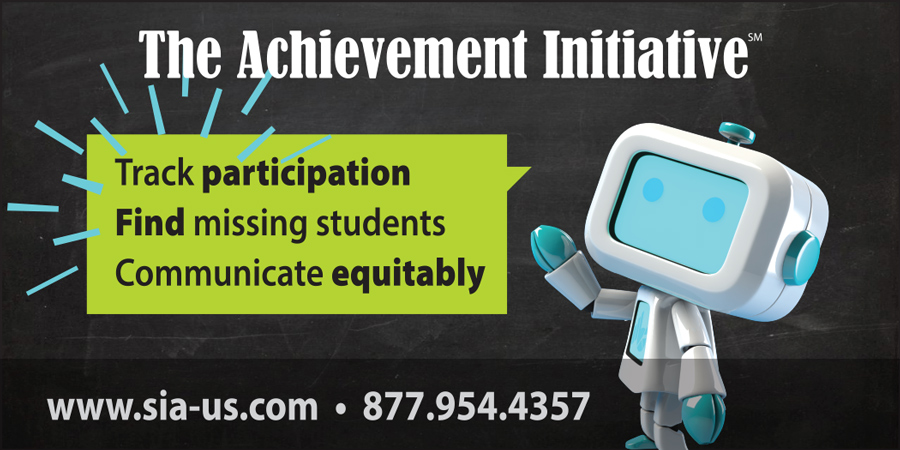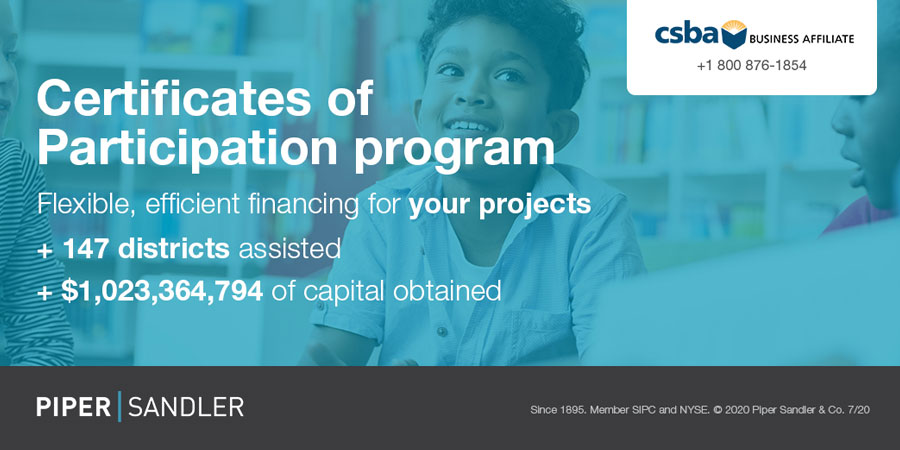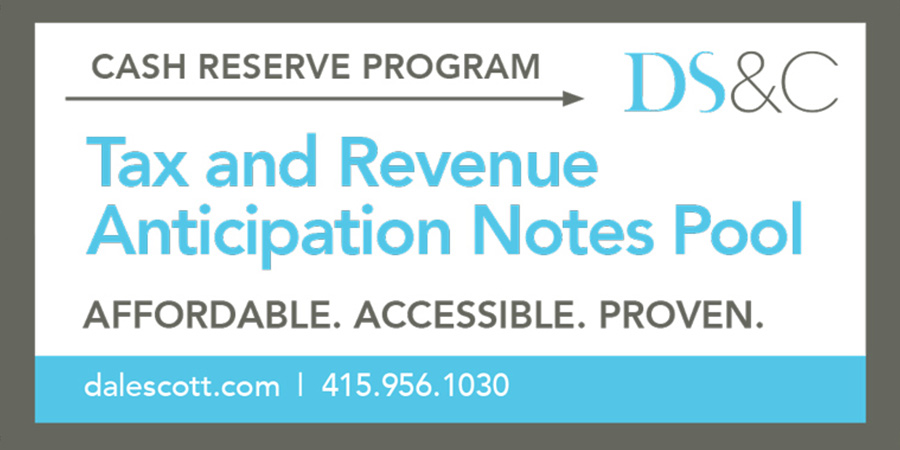

- Stay up to date on the latest COVID-19 news and resources at www.csba.org/coronavirus.
- Read the latest in education news on the CSBA blog at blog.csba.org.


Troy Flint | tflint@csba.org
Managing Editor:
Kimberly Sellery | ksellery@csba.org
Marketing Director:
Serina Pruitt | spruitt@csba.org
Staff Writers and Contributors:
Andrew Cummins | acummins@csba.org
Alisha Kirby | akirby@csba.org
Mike Ambrose | mambrose@csba.org
Briana Mullen | bmullen@csba.org
Graphic Design Manager:
Kerry Macklin | kmacklin@csba.org
Senior Graphic Designer:
Mauricio Miranda | mmiranda@csba.org
Xilonin Cruz-Gonzalez | Azusa USD
President-elect:
Suzanne Kitchens | Pleasant Valley SD
Vice President:
Susan Heredia | Natomas USD
Immediate Past President:
Emma Turner | La Mesa-Spring Valley SD
CEO & Executive Director:
Vernon M. Billy
California School News (ISSN 1091-1715) is published 11 times per year by the California School Boards Association, Inc., 3251 Beacon Blvd., West Sacramento, CA 95691. 916-371-4691. $4 of CSBA annual membership dues is for the subscription to California School News. The subscription rate for each CSBA nonmember is $35. Periodicals postage paid at West Sacramento, CA and at additional mailing office. POSTMASTER: Send address changes to California School News, 3251 Beacon Blvd., West Sacramento, CA 95691.
News and feature items submitted for publication are edited for style and space as necessary.


Research shows that parent engagement efforts have profound and positive effects on a student’s scholastic experience. Schools that prioritize strategic parent engagement see gains in student achievement that correlate with the level of parental participation. This is doubly true now that barriers associated with distance learning have deprived many students of in-person instruction.

and for more information.
CSBA’s 2020 AEC will be an entirely virtual experience that gives attendees access to critical expertise and perspective from the comfort of their home or office. The virtual conference will take place from Thursday, Dec. 3 to Friday, Dec. 4. The virtual platform allows for more flexibility for preconference activities, which will take place over three days — rather than the traditional one day before conference — from Monday, Nov. 30 to Wednesday, Dec. 2. This new schedule provides members with the flexibility to attend more than one preconference activity.


Hadi Partovi
CEO of the education nonprofit Code.org, tech entrepreneur and investor

Jason Dorsey
President of The Center for Generational Kinetics

Leslie Odom, Jr.
Multifaceted Tony and Grammy Award-winning performer


Hadi Partovi
CEO of the education nonprofit Code.org, tech entrepreneur and investor

Jason Dorsey
President of The Center for Generational Kinetics

Leslie Odom, Jr.
Multifaceted Tony and Grammy Award-winning performer

Districts likely aren’t celebrating Attendance Awareness Month this year with the usual fanfare, but in this time of hybrid or virtual learning, where students need additional support to also make up for missed time last year, local educational agencies are acutely aware that being present is more important than ever.
Research has long linked poor attendance to lower reading comprehension and graduation rates, higher dropout rates and even incarceration. As a result, LEAs have historically prioritized efforts to improve attendance rates, but never before has doing so been so challenging.
A joint report from seven educational equity organizations, “A Vision for California’s Schools this Fall: Equity for Dual Language and English Learners in an Unprecedented Moment,” summarizes the issue facing DLLs and ELs, including a disproportionate lack of access to devices and internet, and includes suggestions of what policymakers at the state and local levels, as well as educators, can do to support these student groups.
The California Legislature passed Assembly Bill 1666 in 2019, requiring the California Complete Count – Census 2020 office to partner with local educational agencies to make information about the 2020 U.S. Census available to students and parents. Accurately counting families with young children has presented challenges for the Census Bureau over the years, and with shelter-in-place orders and other COVID-19-related challenges in 2020, states have had to get more creative to make sure everyone gets counted. Even ”Sesame Street” is trying to get the word out.
The familiar back-to-school process for the new school year looks much different as governing boards across the state are wading through reopening plans in the face of new legal requirements and amid evolving guidance. To aid board members and local educational agencies, CSBA recently held a pair of webinars exploring the many legal impacts on governance and operations during the COVID-19 pandemic with top education law attorneys from CSBA‘s premier affiliate law firms.
Among key topics discussed during part one on July 15 were the legal effects of orders and guidance, distance learning requirements, layoffs, liability and items on the bargaining table. A majority of the questions posed to the panel sought clarity on language in Senate Bill 98, the budget education trailer bill, regarding distance learning, layoff restrictions for classified staff and fears over district liability should a student or staff member become infected with COVID-19.
While the immediate focus of the new school year has been on protecting students from the transmission of COVID-19, board members should also be mindful of how the pandemic has exacerbated economic hardship for families, including housing strain, which was a statewide crisis even before COVID-19. Now experts are predicting an “eviction cliff” this fall, and research shows that Latino, African American and immigrant families are twice as likely to be evicted as white families due to higher job losses and a higher percentage of families who rent rather than own their home. According to UC Berkeley’s Terner Center for Housing Innovation, nearly 1 million renter households in the state include someone who has lost a job because of the pandemic, and almost half of renter households — 422,000 — are families with children. Potential increases in homelessness will likely impact schools’ efforts to identify and serve this vulnerable student population.
The obligations of local educational agencies to ensure that homeless students have equal access to the educational program are detailed in the federal McKinney-Vento Homeless Assistance Act. Requirements of the Act include giving a housing questionnaire to all parents/guardians during school registration, including the district liaison’s contact information on district and school websites, providing staff professional development on the definition and signs of homelessness, and contacting appropriate local agencies to coordinate referrals for homeless children and unaccompanied youth. For further information about the requirements, see CSBA’s sample board policy and administrative regulation BP/AR 6173 – Education for Homeless Children and the summer issue of California Schools magazine.
![]() GovernanceCorner Practical tips from our MIG faculty
GovernanceCorner Practical tips from our MIG faculty
When county and district boards fail to recognize the good work of staff, they also fail to uplift the work that makes their district successful. During these difficult times, the simple act of recognizing staff is an easy way for any county or district board to show their appreciation for the hard work and dedication of their schools’ staff. Research shows that recognition requires two things to be effective: it must be individualized and it must be frequent. Ideally, superintendents and administrators, with board direction, should create a “recognition-rich environment.” Praise must come from all directions, and not just during staff appreciation weeks.
As COVID-19 has impacted operations for a lot of things, it didn’t stop the California County Boards of Education Board of Directors and Executive Board members from attending the annual retreat — virtually. Twenty-four members attended the event to brainstorm key tasks for next year and building up the organization.
The retreat kicked off on Friday afternoon with the Executive Board meeting. Friday evening brought the BOD together for an opportunity to get to know each other and share their desired outcomes for the weekend. Members were sent their own CCBE coffee mugs and cookies with the logo on them as part of the Friday get-together.
During the main portion of the retreat, the team looked at key tasks and strategic planning for the next year. The areas of focus were budgets, advocacy, regional visits and build-ing relationships with other organizations. Wonderful ideas and concepts were shared, and a task list was built for everyone to work on. Specific items included increasing CCBE marketing efforts with a video from the CCBE President sharing membership benefits and the direction of the organization, how to improve advocacy and work more with CSBA’s PACERs (Public Affairs & Community Engagement Representatives), virtual regional visits and ways to mentor future leaders of CCBE.
UpcomingEvents info: 800-266-3382





